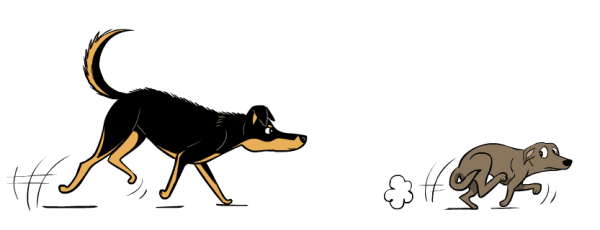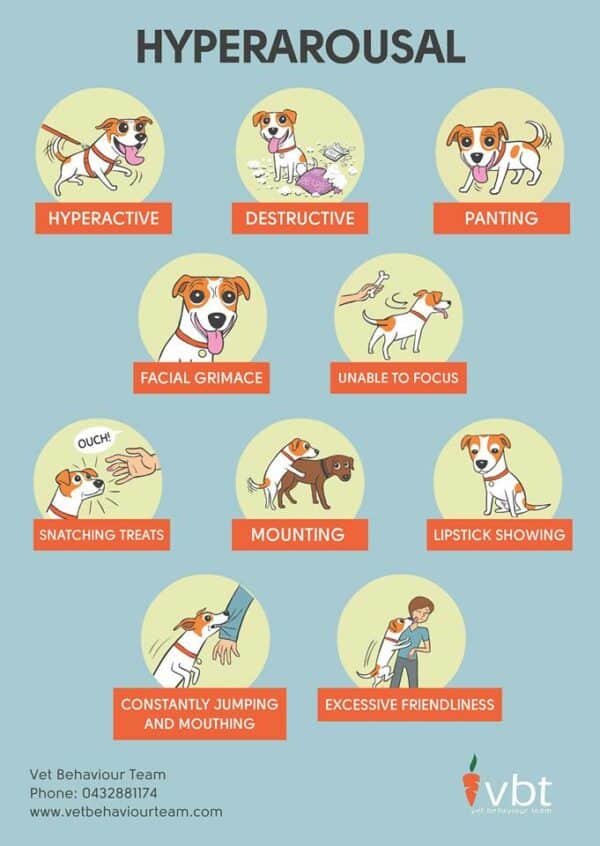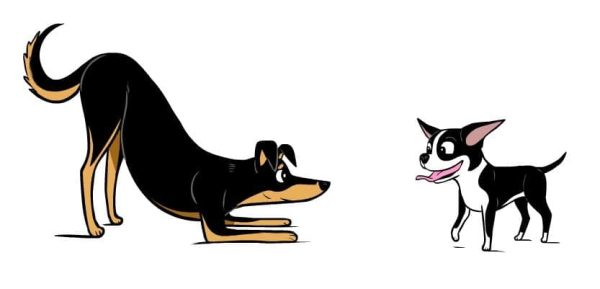Bullying by dogs is a more common behavior than many people want to admit. And any breed can be a bully. I’m not talking specifically here about “bully” breeds, such as Pit Bull-type dogs and others. A Toy Poodle can be a bully!
Owners of bullies are mostly unaware or in denial, so the problem exists and persists. A dog targets a timid pup with their overwhelming, overly assertive and obnoxious play behaviors. They ignore signs from the other dog saying, “leave me alone.” The timid pup becomes more fearful, which can exasperate the bully into being even more overwhelming. Without human intervention, the bullied pup has no choice but to finally tell the bully off with a growl or raised lip, which can escalate into a fight.
How dogs become bullies
Just as an abused child has a greater chance of becoming an abuser, the same can happen with a dog who was bullied or not properly socialized at a critical time during puppyhood. A bullied dog may then take their frustration out on younger and/or more timid pups. This domino effect can continue until the owner recognizes the behavior for what it is.

The larger dog exhibits bulling behavior toward smaller pup. (Image from the Dog Decoder smartphone app/illustration by Lili Chin)
Signs of bullying behavior
If your dog does the following, they are a bully:
- Barking incessantly, in play or when just walking down the street. Bullies don’t let up because they don’t respect other dogs’ body language and boundaries.
- Engaging in play in a very assertive manner, completely unconcerned about other dogs’ interest.
- Charging another dog over toys, territory or food, even when the other backs down or has shown no interest in the items.
- Holding another dog to the ground or standing over them after the dog has rolled over in appeasement.
- Becoming hyperaroused when another dog tries harder and harder to say NO. Bullies can get even more energetic in their need to engage.
- Excessive mounting.
- Inability to focus.

Signs of hyperarousal. (Image courtesy Patricia Tirrell of the Vet Behavior Team)
If you see this body language from your dog while engaging with other dogs, they are a bully:
- Direct stare
- Tail high
- Dilated pupils
- Rigid body
- Growling
- Raised lip
- Panting
You should also pay attention to how other dogs respond to their repeated attempts at play. If another pup reciprocates with play bows, chasing or wrestling, then the behavior works for both dogs. If the other pup continues to try and get away, looks away, rolls over with their tail between their legs, or hides behind their owner and snarls with a slightly raised lip, rounded body and whale eye, then your dog is bullying and you need to step in.

Let’s play, both dogs agree. (Image from the Dog Decoder smartphone app/illustration by Lili Chin)
When and how to intervene
As soon as you see any of these signs or body languages, remove your dog. But you must be careful how you intervene so as not to encourage your dog even further. Keep your energy calm and quiet while redirecting them to something else.
Sometimes redirecting can be difficult because your dog may not be able to focus on anything but the pup they are targeting. If this happens, ask the other owner to move their dog away so you can do the same with yours.
How to help your dog not be a bully
Once you can recognize bullying, behavior modification becomes easier. Identify strong neutral pups who can handle your dog’s attempts at bullying, so that you can intervene appropriately. Also keep a leash on your dog to make intervening easier. Time-outs work wonders, but if your dog fails to play appropriately after two or three time-outs, stop play for the day. If time-outs are effective, reward with more play, as ending with positive play reinforces appropriate play next time.
The best prevention for not having a bully dog is to properly socialize your puppy early between 3 weeks and 12 weeks and keep up until the dog hits there age of maturity. Please refer to the link above for information on proper socialization.
About the author: Jill Breitner is a professional dog trainer and dog body language expert. She is a certified Fear Free Professional, Fear Free Professional for Foundation for Puppies and Kittens, as well as Certified in Animal Behavior and Welfare. She is the author of the Dog Decoder, a smartphone app about dog body language. Join Jill on her on her Facebook page.
The post Is Your Dog a Bully? appeared first on Dogster.
No comments:
Post a Comment